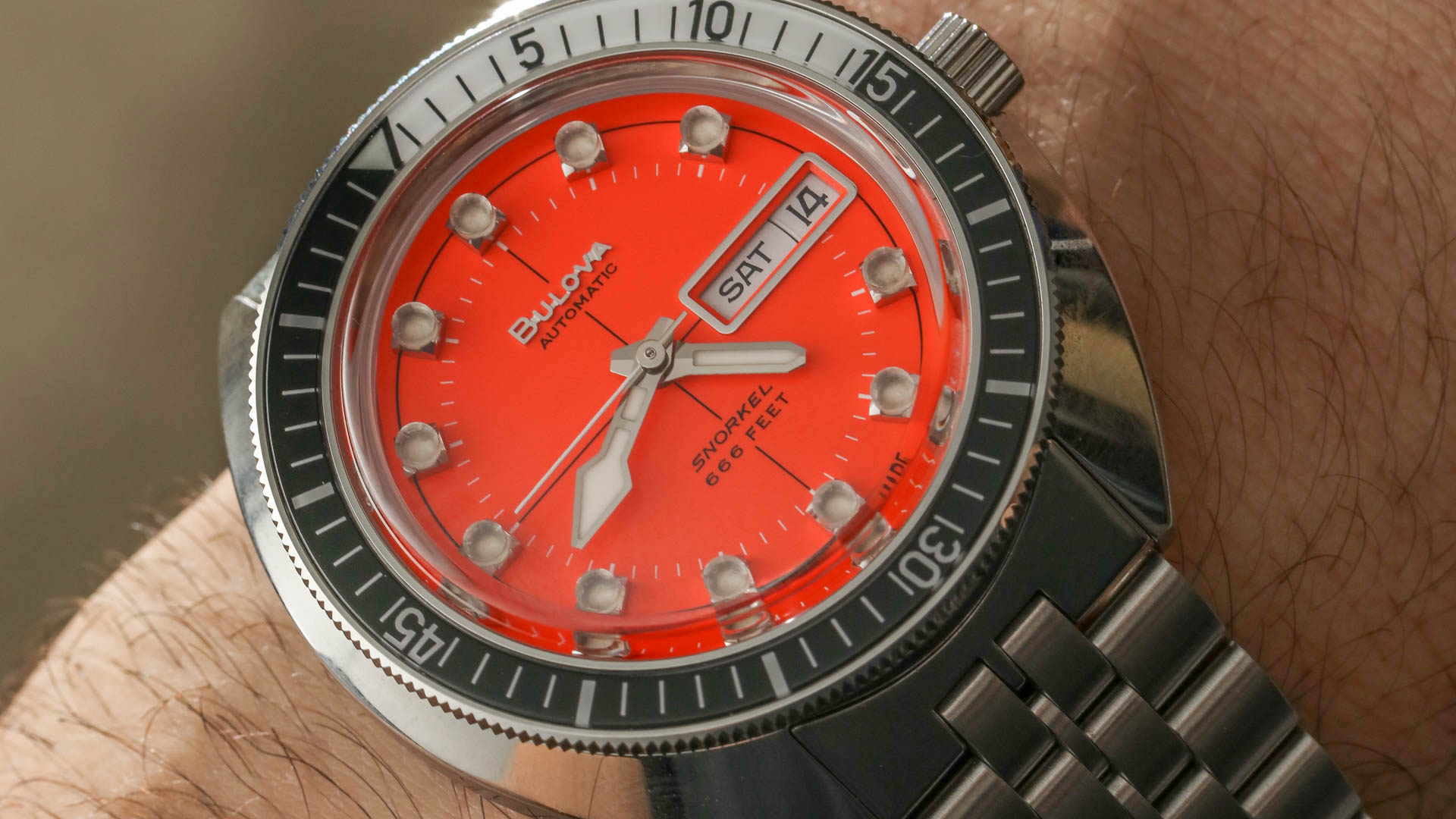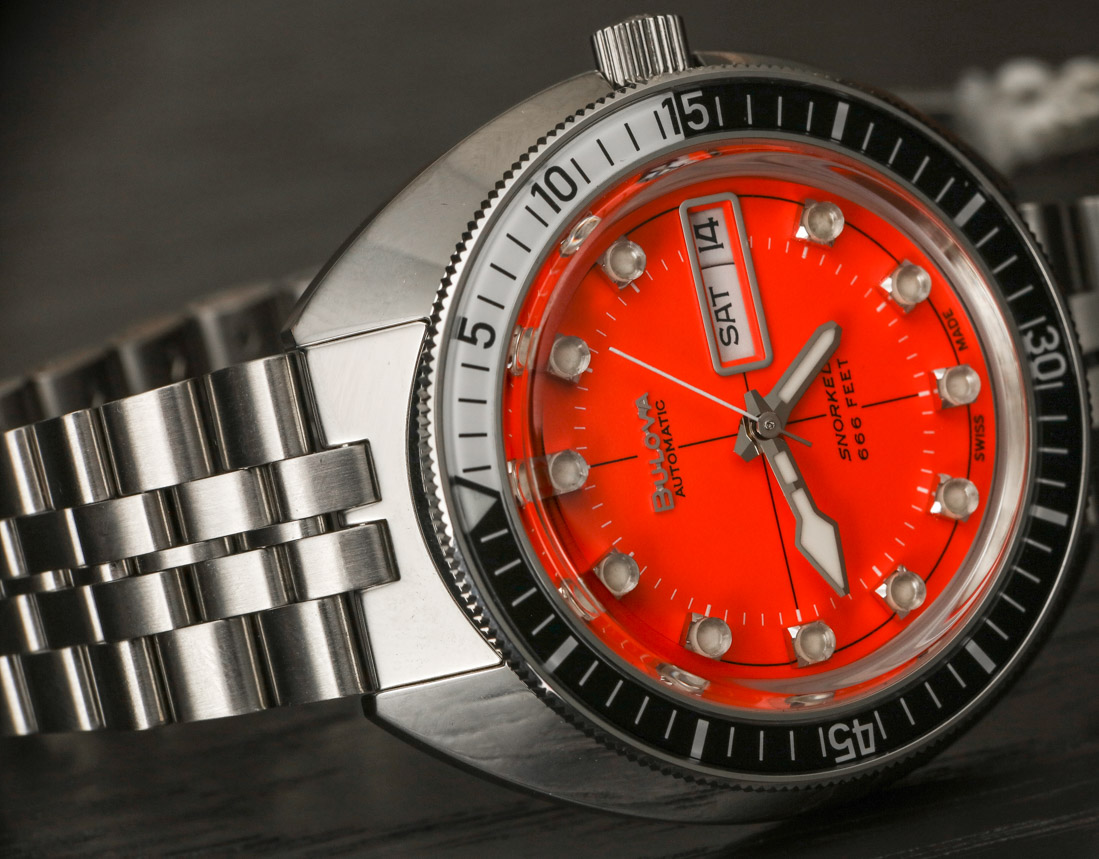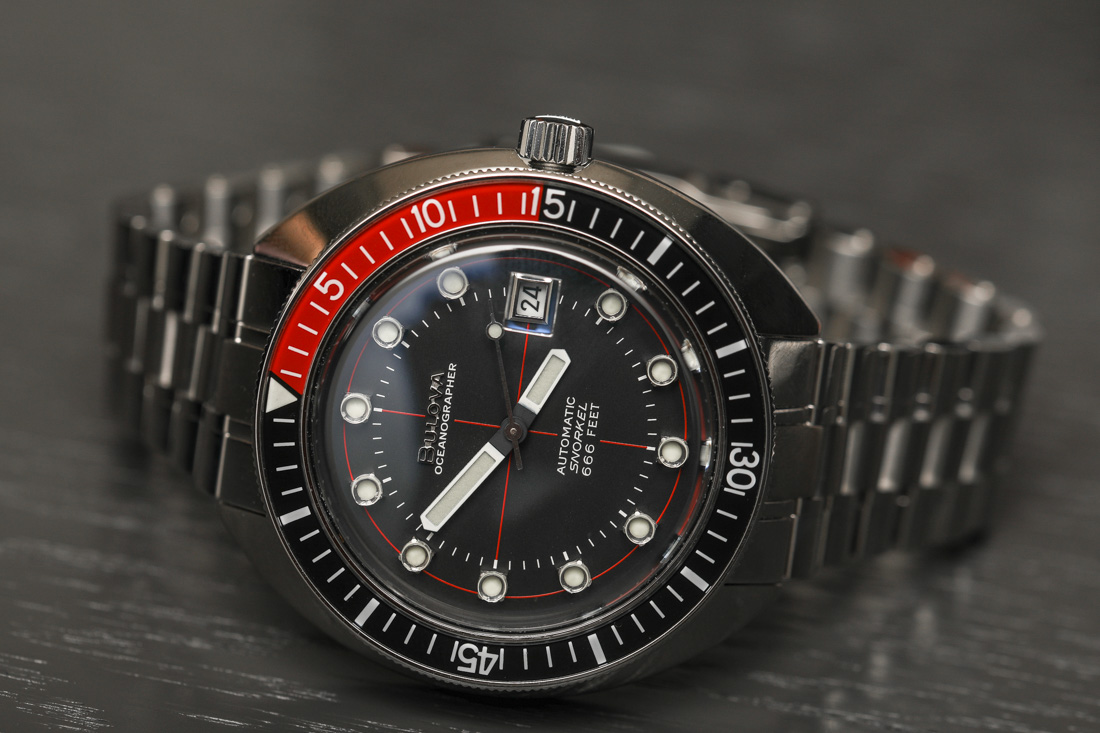
At Baselworld, Bulova released a pair of heritage inspired watches for their Archive collection. Both are based on the brand’s cushion-cased Oceanographer diver of the 1970s. With a more true-to-the-original and expensive version in the orange dial Bulova Archive Series Oceanographer Devil Diver Limited Edition and a somewhat updated take on the design with the larger, non-limited Archive Series Oceanographer Devil Diver, Bulova have tried to please different kinds of fans with different takes on one of their most loved designs. Here, we go hands on with both of the Oceanographer Devil Divers to get a closer look at Bulova’s handiwork.
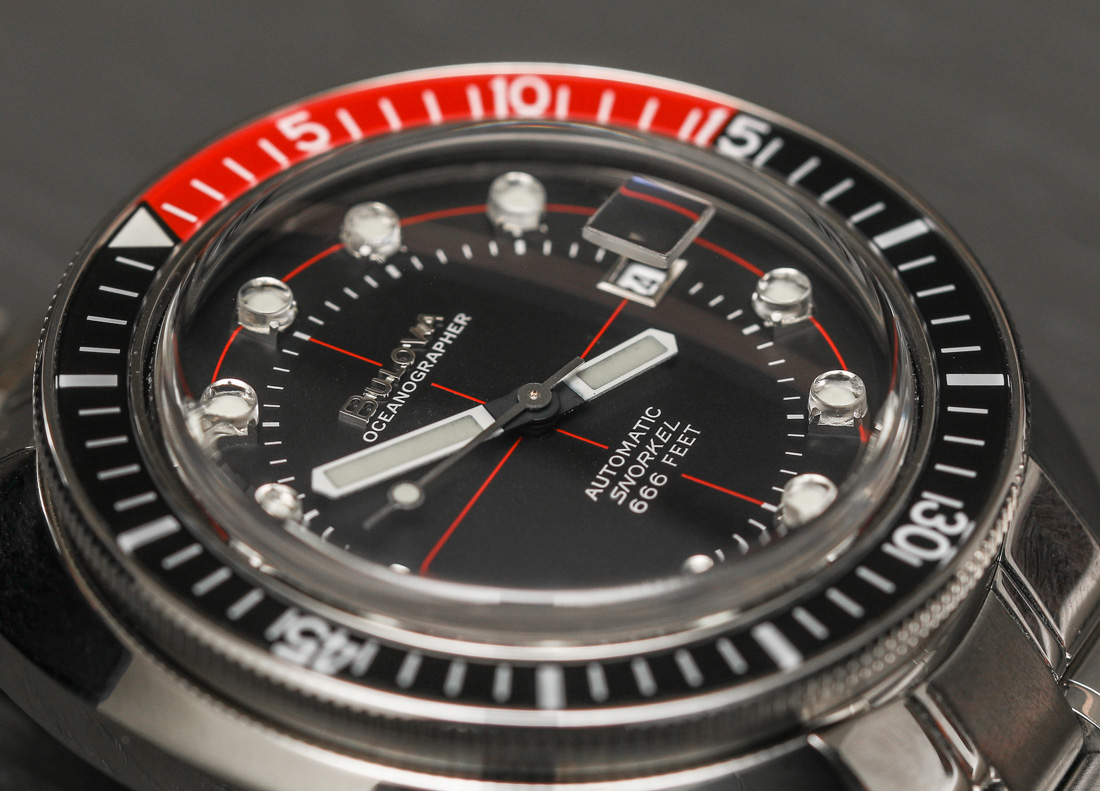
Most central to the Devil Diver’s look is the dial. Both versions feature the large, applied, circular luminous hour markers, sitting just inside of a printed line encircling the dial. The smaller limited edition version has an orange dial, simple minute marker lines printed in white, and an outer ring and central cross hair motif printed in black. Also true to the original is the dial text, with an applied Bulova signature and “automatic” at twelve and “snorkel” along with “666ft” at 6 o’clock. With a black dial, the non-limited version features red highlights and a wordier dial with “Oceanographer” printed underneath the applied brand signature at twelve. Both watches have date functions located at 3 o’clock, with a day/date function on the limited version and a simple date window on the standard version.
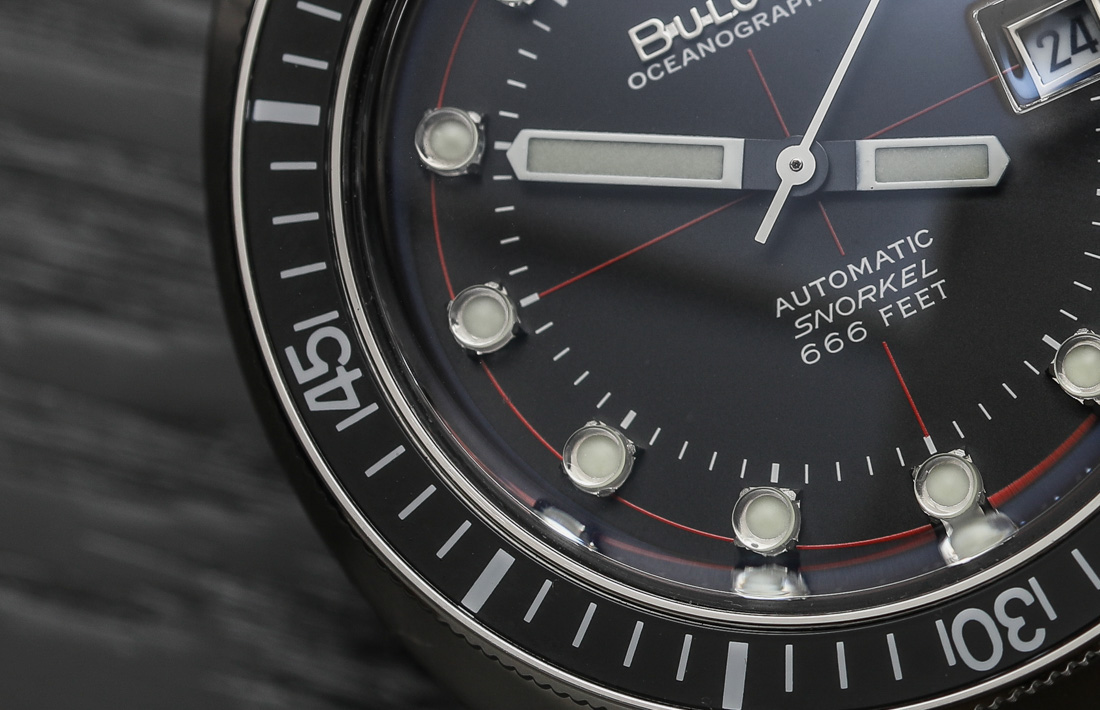
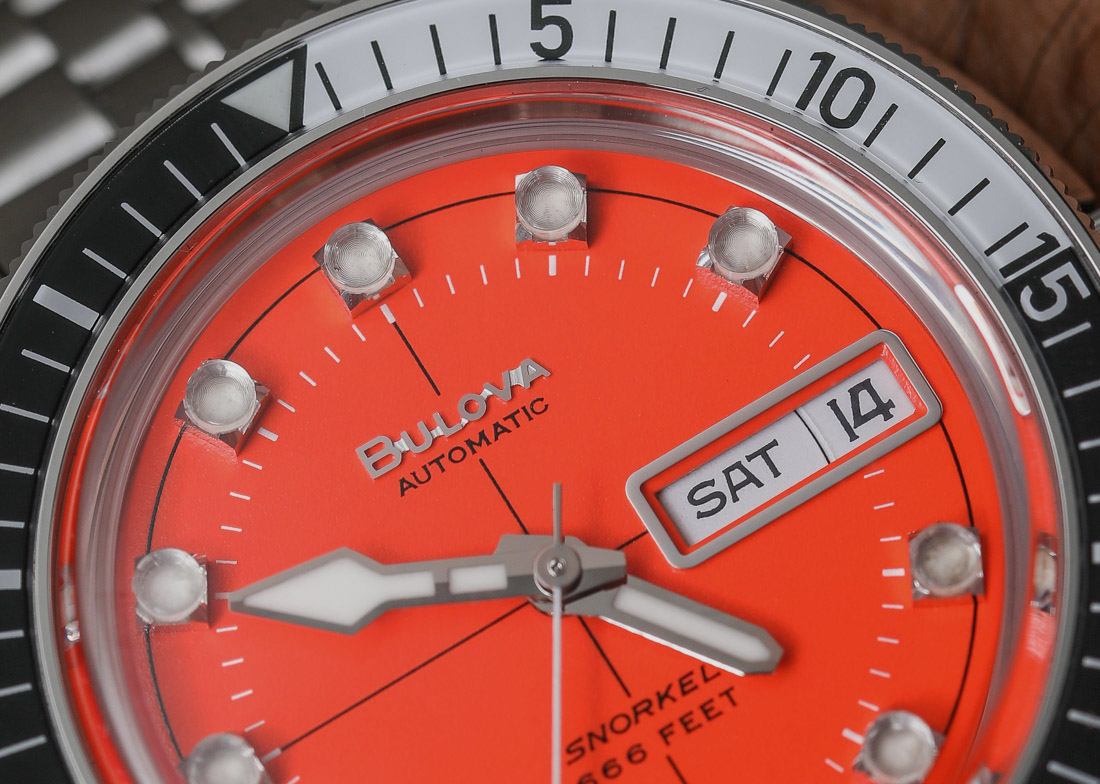
Hands are different from one model to the next as well, with quirkier chromed luminous hands on the orange dialed limited model and pared down baton hands on the standard version. Both dials are clean, highly legible, and evocative of the era in which they were designed. Both versions are also very true to their ancestors, with only very subtle changes to differentiate their position on the brand’s timeline. The biggest differences are in the arrangement of text on the larger black dialed version, likely an effort to balance out the dial when presented in a larger version. Both watches are, in keeping with their ancestors, housed in stainless steel cushion cases.


Popular in the 1960s and ’70s, cushion case shapes for watches were prevalent especially in dive watches. Doxa is another brand that utilized the design for their Sub series and still does with their modern collection. The Archive Series Oceanographer Devil Diver models both feature near identical case designs, with the principal difference being size. The limited version is 40mm wide whereas the standard model speaks more to modern tastes with a 44mm case. Both cases are curved to fit the wrist comfortably and feature a screw down crown in the traditional 3 o’clock spot.
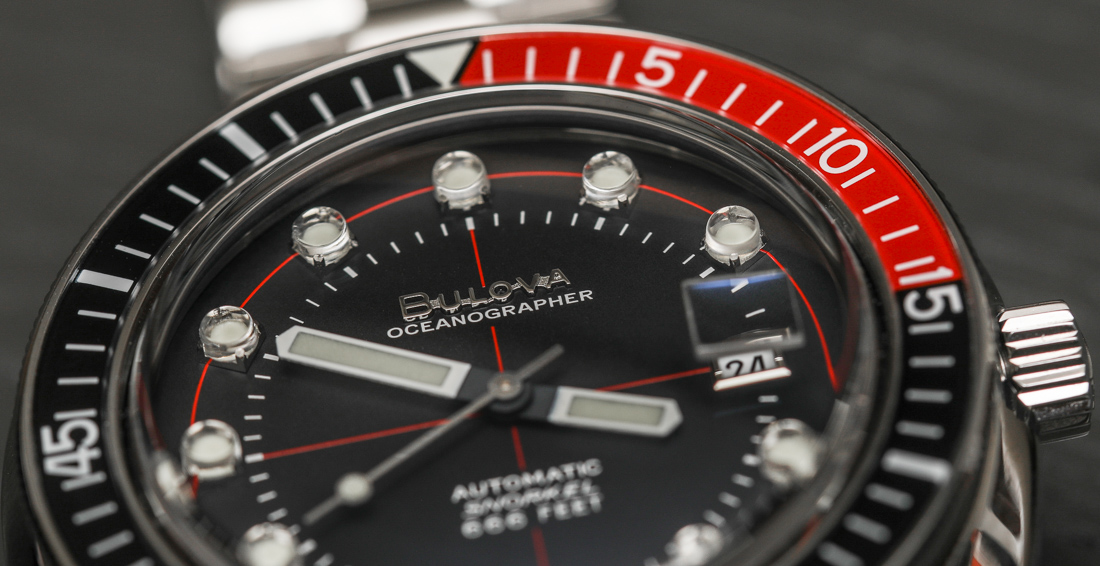
Colorful acrylic bezels, all the rage in the ’70s, are featured on the Devil Divers, with a black and white bezel on the limited example and a color matched black and red bezel on the standard version. Box sapphire anti-reflective crystals and simple screw-down casebacks on both versions complete the 200m water-resistant package and shield the movement within.
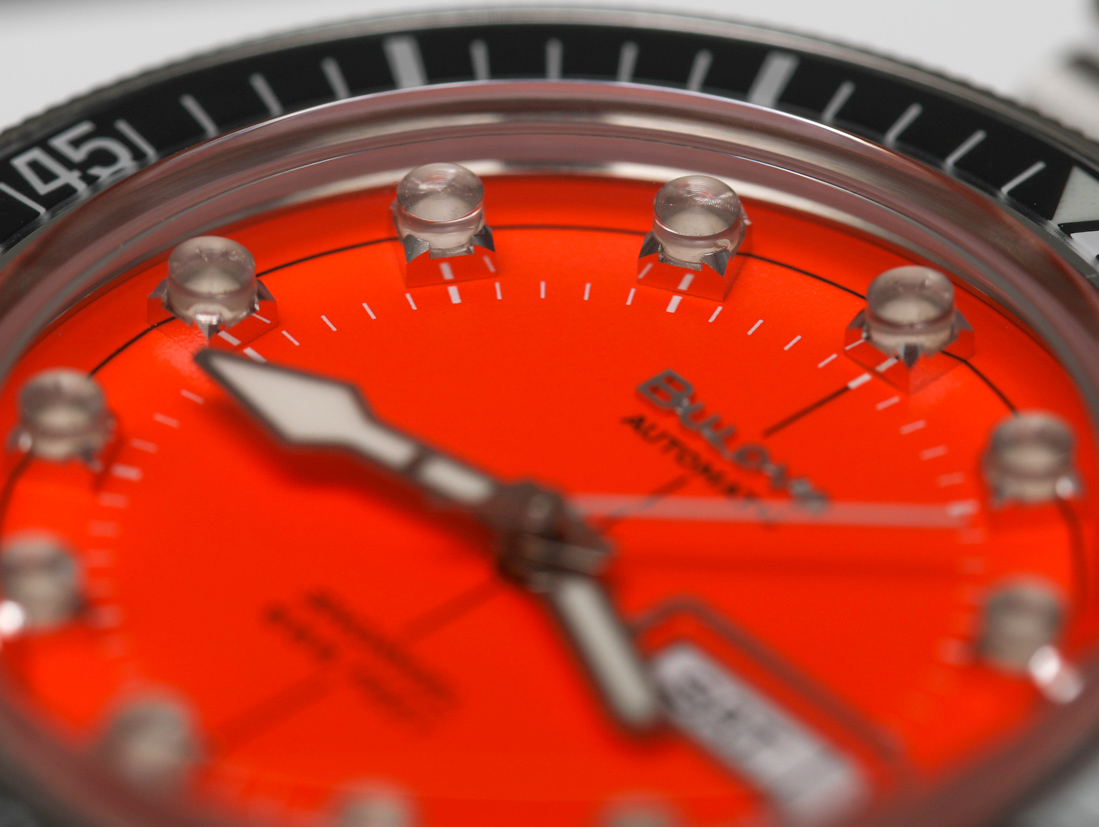

The principle difference between Bulova’s Devil Diver variations other than size is the choice of movement. The limited edition (and more expensive) orange dial version houses a Swiss made Sellita SW 220 automatic movement with 26 jewels and a rate of 28,800 vph whereas the standard model utilizes a Miyota automatic caliber. The different movements show how Bulova has positioned the two watches, with a Swiss powered limited edition version for the collectors and a more conservatively appointed version for the masses.

Rattly, over-complicated bracelets are another hallmark of dive watches from the 1970s, and the Limited Edition Archive Series Oceanographer Devil Diver takes full advantage of the look and feel of the original in its jubilee bracelet design, whereas the larger and heavier Archive Series Oceanographer Devil Diver has a more updated looking bracelet to match the increased heft. Some vintage diving nerds may be left wanting for a ‘tropic’ rubber variation but with what appear to be 20mm and 22mm lug widths, aftermarket options are plentiful.


So called “vintage reissue” or “heritage” watches, which are all over the place, tend to fall into two categories. First, and most often, you’ll see the reimagined take on a brand’s most revered model or models, with old school design DNA alongside modern materials and execution. The Tudor Heritage Black Bay is a good example of this idea. Then, there are the true reissues, almost exactly the same as their forebears in look and feel, albeit subtly updated with tech in keeping with today’s standards. Seiko’s recently released Golden Tuna reissue is a great example. What’s really cool here is that Bulova did both, daring to attempt to please everyone rather than simply turning up their noses at those who think they should have done one or the other.
At $1,495 for the Archive Series Oceanographer Limited Edition Devil Diver and $795 for the Archive Series Oceanographer Devil Diver, Bulova seem to have created a solid pair of options in the vintage diving realm with a reasonable price tag to accompany the old school looks. bulova.com

